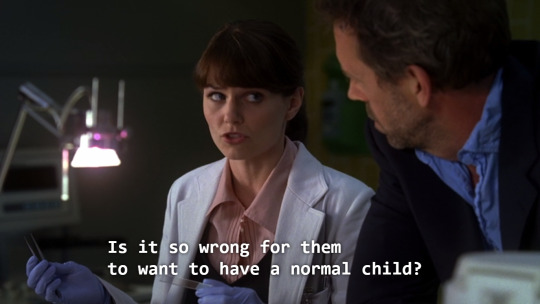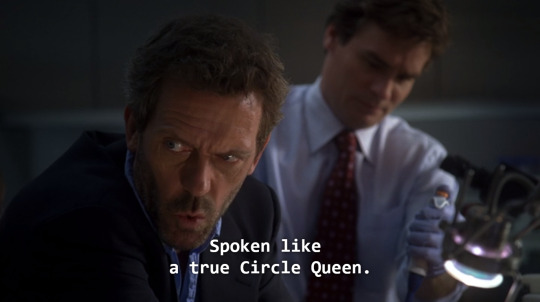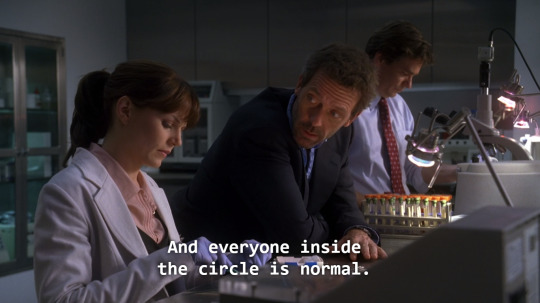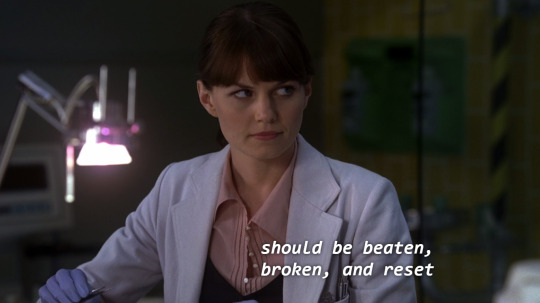Note
Hi I’m new here idk know the ‘about books only’ part of asks works, but does it count if I ask for book recommendations? Because I was wondering if you knew (or had written) any books about eating disorders and how to write and/or support someone with one.
Hey! Sorry, I don't know any books on the topic, but for the overlap of mental health and storytelling, try @scriptshrink !
21 notes
·
View notes
Text
So so honored to get THREE separate mentions in this list! (I haven't read the first few, but the first one sounds fascinating!)
To differentiate the last 3, which are mine:
10 BS Tropes: this is how not to piss off medical folks in storytelling. It is short, and it was free the last I checked.
Maim Your Characters: this is a guide to injury as a plot structure tool. As in, how and when do you make the most out of a good character thrashing, from a plot perspective?
Blood on the Page is the book that tells you how long a specific injury might take to heal, what the character would go through, and details about their treatment.
Also, if cash is an issue, most of Blood on the Page and Maim Your Characters is available in my blog archives if you can navigate the hellsite. (The #masterposts tag is your best bet). And 10 BS Tropes was free the last I checked!
(Since I've had people ask: I priced the books so that, last I checked, I earn equivalent royalties whether you buy paperbacks or digital.)
xoxo, Aunt Scripty
P.S.: While I no longer answer asks about specific scenarios or injuries, I'm happy to answer questions about the books themselves via DM or ask box. Including the "hey I want this but REALLY can't afford it could you PDF me?" ones.
Ref Recs for Whump Writers
Violence: A Writer’s Guide: This is not about writing technique. It is an introduction to the world of violence. To the parts that people don’t understand. The parts that books and movies get wrong. Not just the mechanics, but how people who live in a violent world think and feel about what they do and what they see done.
Hurting Your Characters: HURTING YOUR CHARACTERS discusses the immediate effect of trauma on the body, its physiologic response, including the types of nerve fibers and the sensations they convey, and how injuries feel to the character. This book also presents a simplified overview of the expected recovery times for the injuries discussed in young, otherwise healthy individuals.
Body Trauma: A writer’s guide to wounds and injuries. Body Trauma explains what happens to body organs and bones maimed by accident or intent and the small window of opportunity for emergency treatment. Research what happens in a hospital operating room and the personnel who initiate treatment. Use these facts to bring added realism to your stories and novels.
10 B.S. Medical Tropes that Need to Die TODAY…and What to Do Instead: Written by a paramedic and writer with a decade of experience, 10 BS Medical Tropes covers exactly that: clichéd and inaccurate tropes that not only ruin books, they have the potential to hurt real people in the real world.
Maim Your Characters: How Injuries Work in Fiction: Increase Realism. Raise the Stakes. Tell Better Stories. Maim Your Characters is the definitive guide to using wounds and injuries to their greatest effect in your story. Learn not only the six critical parts of an injury plot, but more importantly, how to make sure that the injury you’re inflicting matters.
Blood on the Page: This handy resource is a must-have guide for writers whose characters live on the edge of danger. If you like easy-to-follow tools, expert opinions from someone with firsthand knowledge, and you don’t mind a bit of fictional bodily harm, then you’ll love Samantha Keel’s invaluable handbook
19K notes
·
View notes
Text
12K notes
·
View notes
Text
If anyone has some fiction questions for a blacksmith, perhaps this kindly Tumblr could help?
Hey! Are there blacksmiths in your story? I'm a hobbyist blacksmith and I'm here to help!
Blacksmithing is one of those things that a lot of people get wrong because they don't realize it stuck around past the advent of the assembly line. Here's a list of some common misconceptions I see and what to do instead!
Not all blacksmiths are gigantic terrifying muscly guys with beards and deep voices. I am 5'8, skinny as a twig, have the muscle mass of wet bread, and exist on Tumblr. Anybody who is strong enough to pick up a hammer and understands fire safety can be a blacksmith.
You can make more than just swords with blacksmithing. Though swords are undeniably practical, they're not the only things that can be made. I've made candle holders, wall hooks, kebab skewers, fire pokers, and more. Look up things other people have made, it's really amazing what can be done.
"Red-hot" is actually not that hot by blacksmith terms. when heated up, the metal goes from black, to red, to orange, to yellow, to white. (for temperature reference, I got a second degree burn from picking up a piece of metal on black heat) The ideal color to work with the metal is yellow. White is not ideal at all, because the metal starts sparking and gets all weird and lumpy when it cools. (At no point in this process does the metal get even close to melting. It gets soft enough to work with, but I have never once seen metal become a liquid.)
Blacksmithing takes fucking forever. Not even taking into account starting the forge, selecting and preparing metal, etc. etc. it takes me around an hour to make one (1) fancy skewer. The metals blacksmiths work with heat up and cool down incredibly fast. When the forge is going good, it only takes like 20 seconds to get your metal hot enough to work with, but it takes about the same time for it to cool down, sometimes even less.
As long as you are careful, it is actually stupidly easy to not get hurt while blacksmithing. When I picked up this hobby I was like "okay, cool! I'm gonna make stuff, and I'm gonna end up in the hospital at some point!" Thus far, the latter has yet to occur. I've been doing this for nearly a year. I have earned myself a new scar from the aforementioned second degree burn, and one singe mark on my jeans. I don't even wear gloves half the time. Literally just eye protection, common sense, and fast reflexes and you'll probably be fine. (Accidents still happen of course, but I have found adequate safety weirdly easy to achieve with this hobby)
A forge is not a fire. The forge is the thing blacksmiths put their metal in to heat it up. It starts as a small fire, usually with newspaper or something else that's relatively small and burns easily, which we then put in the forge itself, which is sort of a fireplace-esque thing (there's a lot of different types of forge, look into it and try to figure out what sort of forge would make the most sense for the context you're writing about) and we cover it with coal, which then catches fire and heats up. The forge gets really hot, and sometimes really bright. Sometimes when I stare at the forge for too long it's like staring into the sun. The forge is also not a waterfall of lava, Steven Universe. It doesn't work like that, Steven Universe.
Welding and blacksmithing are not the same thing. They often go hand-in-hand, but you cannot connected two pieces of metal with traditional blacksmithing alone. There is something called forge welding, where you heat your metal, sprinkle borax (or the in-universe equivalent) on it to prevent the metal from oxidizing/being non-weldable, and hammer the pieces together very quickly. Forge welding also sends sparks flying everywhere, and if you're working in a small space with other blacksmiths, you usually want to announce that you're welding before you do, so that everyone in a five-foot radius can get out of that five-foot radius. You also cannot just stuck some random pebbles into the forge and get a decent piece of metal that you can actually make something with, Steven Universe. It doesn't work like that, Steven Universe.
Anvils are really fucking heavy. Nothing else to add here.
Making jewelry is not a blacksmithing thing unless you want jewelry made of steel. And it will be very ugly if you try. Blacksmithing wasn't invented to make small things.
If there's anything here I didn't mention, just ask and I'll do my best to answer.
35K notes
·
View notes
Text
TO THOSE MAKING NATIVE OCS
I see this a lot, no one has actual names, or any reference for names, that are legit Native American, varying among the tribes, for their characters.
Babynames.com and shit like that will give you names made up by white people.
However, I’ve got your solution.
Native-Languages is a good website to turn to for knowledge on a lot of native things, including native names. If you’re unsure about the names you’ve picked, they even have a list of made up names here!
Please don’t trust names like babynames.com for native names, they’re made up and often quite offensive to the cultures themselves.
239K notes
·
View notes
Text
things people do after having a nightmare that isn’t crying
struggle to catch their breath
grab onto whatever’s close enough to ground themselves in reality
become nauseous / vomit
shake uncontrollably
sweat buckets
get a headache
things people do to combat having nightmares if they occur commonly
sleep near other people so they can hear the idle sounds of them completing tasks
move to a different sleeping spot than where they had the nightmare
leave tvs / radios / phones on with noise
just not sleep (if you want to go the insomnia route)
sleep during the day in bright rooms
things people with insomnia do
first, obviously, their ability to remember things and their coordination will go out the window
its likely they’ll become irritable or overly emotional
their body will start to ache, shake, and weaken
hallucinate if it’s been long enough
it becomes incredibly easy for them to get sick (and they probably will)
add your own in reblogs/comments!
33K notes
·
View notes
Text
What makes you think we haven't???
(Once. Just once. But it was glorious.)

37K notes
·
View notes
Text
Seems like this could be useful to some of y'all
common myths about migraines (AKA if you get headaches regularly, please seek treatment for migraines)
"i don't have migraines because while i get them several times a week, it's only when i am hungry or dehydrated."
those are probably migraines. thirst, hunger, sleep disturbances, or any disruption to routine are common migraine triggers.
"my headaches are specifically barometric related, i get them when the weather/altitude changes."
those are probably migraines. barometric pressure is a common migraine trigger.
"i get headaches all the time but ibuprofen gets rid of them so they can't be migraines."
that's not true. ibuprofen works great at relieving migraine pain for many people.
"my consistent headaches are tension headaches. i feel them originate in my neck/shoulders."
those are probably migraines. muscle tension is a common migraine trigger.
if you are regularly getting headaches (once a week or more), you are likely getting migraines. in fact, a good rule of thumb if you're consistently getting headaches is to treat them as migraines until you can rule out migraines. that's how common "chronic headache = migraine" actually is.
migraines are a neurological disorder wherein pain is one symptom. pain is often the MAIN symptom, and the most noticeable symptom, which can make diagnosis tricky. other symptoms of migraine include:
fatigue
nausea/vomiting
digestive issues
visual disturbances (auras)
sensitivity to light and/or sound
mood changes
brain fog/cognitive changes
ringing in the ears
dizziness/vertigo
numbness/weakness on one side of the body
this list is NOT complete, but is a starting point. i really like the comparison to a hangover. if you generally feel hungover when you get a headache (without having consumed alcohol), that's a classic migraine presentation.
so many people suffer from migraine and don't even know it, so they aren't able to advocate for themselves to get treatment. there are great new migraine treatments on the market! if you're able, please seek treatment for your migraines. a better quality of life is possible.
17K notes
·
View notes
Text
Aaaaand could maybe be helpful for writers too!
HEY ARTISTS!
Do you design a lot of characters living in not-modern eras and you’re tired of combing through google for the perfect outfit references? Well I got good news for you kiddo, this website has you covered! Originally @modmad made a post about it, but her link stopped working and I managed to fix it, so here’s a new post. Basically, this is a costume rental website for plays and stage shows and what not, they have outfits for several different decades from medieval to the 1980s. LOOK AT THIS SELECTION:

OPEN ANY CATEGORY AND OH LORDY–

There’s a lot of really specific stuff in here, I design a lot of 1930s characters for my ask blog and with more chapters on the way for the game it belongs to I’m gonna be designing more, and this website is going to be an invaluable reference. I hope this can be useful to my other fellow artists as well! :)
Did you find this helpful? If you’re able, maybe buy me a coffee please? :D
296K notes
·
View notes
Text
If I were to do something Very Stupid and mildly unretire to write ONE (1) post about storytelling + health/injuries/trauma/diseases/...
....What would you want it to be about?
(NOT a promise)
127 notes
·
View notes
Photo
It is 100% better to be alive with a COVID exposure than to die of organ failure ¯\(◉‿◉)/¯
Yes, risks. Yes, screening procedures. But the alternative for most recipients is a pine box.
Pine Box Prevention is one of the highest good deeds one can do IMO. So stay curious, look at the science based evidence, but don't let the what-ifs of donation make you change your mind on giving someone else a chance to live.

72K notes
·
View notes
Photo
Sincerely: This is 100% not true! Donations to science have a lot of positive upsides. There are a lot of things cadavers can be useful for, including testing new treatments or surgical procedures, providing valuable training and education for students, and more!
You can also register to become an organ and tissue donor if science isn't your thing! One donor can save up to 8 lives (depending on what's healthy enough to donate). Even if you have significant organ damage, your corneas can help others see again, and your skin can help a burn victim survive.
Your body has worth, both when you're alive and after you're gone ❤️

72K notes
·
View notes
Note
Flawless as ever from @howtofightwrite !
For some extra goodness....
Keep in mind, when someone tries this, they're looking to overcome some of the strongest muscles in the body (the strap muscles, AKA SCM or sternocleidomastoid, and the trapezius muscles where they connect to the skull, AND levator scapulae), break the vertebrae, and then also break the spinal cord itself.
Also, the first two vertebrae (C1 and C2, Axis and Atlas) are literally designed for rotation. There's a limit, but the neck turns pretty far just fine.
For reference, when someone is being executed by hanging, a good hangman will make the drop up to 3 meters (9 feet+) to make sure enough force is applied to break the neck and sever the spinal cord. Generally it takes 1,000 - 1,250 foot-lbs of torque to do this - an amount of force it's almost impossible to generate by hand.
Every movie makes it look so easy to snap someone's neck by twisting their head really fast and hard, and it's used all the time, but it can't possibly be that easy or effective can it? It's not like every Joe Schmoe on the street can start going around snapping necks can they? They also love to have people snap necks between their thighs, I imagine that's even harder and less likely to work.
So, breaking someone's neck with your bare hands basicallyisn't a thing. Actually breaking your neck doesn't take a lot of force, but the whole neck snap thing takes an absolutely comical amount of force to work, and even if it did, it wouldn't necessarily be lethal. The idea is that it severs the spinal column or the brain stem, but in practice, all you'd be able to do is abuse some dense muscles and ligatures.
This is a real risk in auto accidents, particularly if the victim isn't properly belted, but the version you see in films is pure fiction.
Choking someone out is a lot more viable. This can either come from asphyxiation, or from obstructing blood flow to the brain. The former is slow, and is likely to cause the victim to panic while they slowly lose consciousness. The latter (sometimes called a blood choke, or triangle choke) can quickly lead to death, as you starve the brain of oxygen by cutting it off after it's been absorbed by the body. You do sometimes see these in film, though the amount of time needed to subdue someone is hilariously abbreviated. If you're just choking someone, that will take minutes before they'll lose consciousness, and they're going to seriously start to freak out once they realize they can't breath. Blood chokes, as mentioned earlier, are faster, but you're still looking at a long time in a fight.
Neck snapping with the thighs is about as plausible as the neck twist. Choking someone out with the thighs is slightly more credible. Legs can be used in submission holds while grappling. But, if we're being honest, I think we all know that this isn't used because it's realistic, it's the sex appeal. Without speaking from personal experience, I suspect thigh chokes are harder to get out of, simply because your legs are significantly stronger than your arms, but I'm speculating.
Also, importantly, suffering a broken neck isn't (usually) going to be immediately lethal. As mentioned earlier, unless the spinal chord is severed or the brain stem is damaged, they'll survive. This may result in a life altering injury, but it's not going to be an, “oh, they're instantly, and quietly, dead.”
I remember running across a news report, when we last covered this, where a couple of teens had decided to kill someone by snapping their neck. The victim ended up with some soreness in their neck, and the teens went away for attempted murder. Moral of the story, this doesn't work.
-Starke
This blog is supported through Patreon. Patrons get access to new posts three days early, and direct access to us through Discord. If you’re already a Patron, thank you. If you’d like to support us, please consider becoming a Patron.
1K notes
·
View notes
Text
Hey. Why isn’t the moon landing a national holiday in the US. Isn’t that fucked up? Does anyone else think that’s absurd?
171K notes
·
View notes
Text
Wait what's a buildings fire evacuation plan if you aren't supposed to use the elevator to get down
223K notes
·
View notes
Photo
And this is how you activist in your medical douchebag show. And yes, House is DEEPLY flawed. But this part can stay.











this honestly just came out of left fucking field i would have never expected to hear anything like this in this show. consider me Pleasantly Surprised tbh
330K notes
·
View notes
Note
Hey loves! Hope you don't mind a gentle reblog with additions from ol' Aunt Scripty. @howtofightwrite did an amazing job with this, especially with the development of how zombies have worked in fiction, and, I can add a little nuance as someone who's Seen Some Shit™. (In case we don't know each other, I was a paramedic in a rough neighborhood for about 15 years and ran a blog helping writers with this for a while.) CW for gore, IRL murder.
First things first: entry and exit depends on caliber of gun, distance to target, etc. Generally speaking, a hunting or battle rifle at any range will cause a bigger exit than entry wound, and lots of splatter. (Think about JFK's assassination - parts of the skull literally came off and brain matter exited the head, along with lots and lots of blood.)
The reason for smaller entry and larger exit is simple: the bullet will deform and rotate after making contact with the skull, so it comes out the back kind of smooshed and sideways - it's a messier, bigger hole.
There's also the fact that bullets cause cavitation, especially in something pseudogelatinous like brain matter. Cavitation is essentially the shock wave ripping through the material even in places the bullet does not directly touch -

No, wait -

Keep in mind that the skull is a closed vault - so any shock waves will bounce off the inside of the skull and mess up the brain a second time.
(This is why, last I checked, 95%+ of all GSWs where the bullet entered the cranial vault are fatal.)
Keep in mind, though, a handgun or submachine gun (which use handgun rounds) may cause a small entry and may or may not cause an exit. In that case the bullet has enough energy to break the skull on the way in but not enough to break the skull the way out - so the bullet rattles around the skull and mashes the brain some more.
One thing to ask: are your zombies' hearts beating? If not, you won't see a whole lot of blood spatter, as blood tends to coagulate pretty quickly postmortem. However, the rotting brain matter can and will splatter out pretty hard if your character is using a rifle or machine gun.
If they do have a heartbeat, and the bullet does create an exit wound, then there will be a surprisingly enormous amount of blood. I've seen people stabbed through the heart who barely bled, but your brain uses 20% of the oxygen and sugar in your blood - it's an extremely vascular area and the heart keeps beating even after brain death for at least half a minute. Think about spilling an entire 2-liter bottle of cranberry juice and you'll have some idea of what you're thinking of.
(That said, if it's a handgun with no exit, it can be a fairly tidy scene.)
So that's the physics and biology of GSWs to the head - but let's get to the part that makes this a writing question, which is, what will your audience believe? What's appropriate to the story you're telling? Are you doing a Romero, where gore is bountiful and part of the artistry? What's thematic for your story? How much do you want to show, and how much do you want the audience to imagine?
Also, keep in mind that "head" has multiple parts. Don't be afraid to smash teeth with bullets, leave jaws hanging partially attached, have a shot miss and rip out a throat, etc. if that's appropriate to your story.
It's your world - so how do headshots work in YOUR universe?
xoxo, Aunt Scripty
What's gonna happen if someone gets shoot in the head? Will flesh and blood go all over the place, or will it be a small entry and exit, or will it be something else? Tryna write a zombie story rn and I'm not sure 😭
Usually, they die.
How much damage the head suffers will depend on what was fired. Specific cartridges result in different wound patterns, and if you have a forensic background, you may even be able to identify the bullet used based on the entrance and exit wound. Smaller handgun rounds are likely to result in less tissue disruption. Rifle rounds are more likely to cause serious structural damage, and shotgun shells (particularly buckshot) are likely to cause serious tissue disruption. But, there's another consideration, the more the decomposed the target, the more a round is likely to do. This one's honestly pretty hard to assess in generalities, because there are a lot of factors for decomposition.
This also leads into a far more difficult question, “what happens if you shoot a zombie in the head?” The answer might be, “nothing.”
So, there's two groups of zombies in popular fiction, and the answer to the above question hinges on which one you're examining. Zombies can either be infected with rabies or actual undead, and the latter are far more uncommon in modern pop culture.
A lot of popular zombies are, technically, alive, but cognitively functioning on a more animal level. In many cases, their symptoms are fairly similar to a sever rabies infection (though, the 28 Days Later series is one of the rare cases where the infection is, explicitly, a variant of rabies.) This also includes cases where the infection is from a parasite (many of the later Resident Evil games and of course The Last of Us are examples of this.) In these cases, destroying the brain stem (and, for that matter, destroying the brain) should be effective. The zombie is still propelled by using their nervous system. There's a bit of an exception in cases where the infection creates a second, parallel, nervous system in the victim, which can operate independently of the victim's original.
Living zombies became more popular in the 90s, and were extremely frequent in the mid-2000s. Most horror films that try to downplay the supernatural component, or look to play up the bio-hazardous nature of zombies, is likely to use some variant of these. (As mentioned earlier, a lot of these tend to behave like mutant strains of rabies. And, while it might sound like I'm being flippant here, rabies is a pretty terrifying virus.)
Living zombie apocalypses are, basically, impossible. There's the usual problem of asking how did the zombies actually get to critical mass? But even beyond that, eventually the infected would simply start dropping as their bodies decayed and the victims died. They'd still be a bio-hazard, but you wouldn't see waves of the undead pressing against the defenders' barricades.
If you want a much more detailed breakdown of the biology of various critters in pop culture (including a lot of zombies), Roanoke Gaming on YouTube is an excellent reference.
The other variety of zombie are far more rare in pop culture, and these are the actual revenants. Either they've been raised by some necromancer, or they're returning due to some other factor. Critically, these zombies are, truly, undead. Shooting them in the head might take it apart, but it's also quite likely that won't put them (back) down, as they're not actually using their original nervous system for anything meaningful. These kinds of zombies are far more threatening. In theory, things like extreme cold would cause further damage to these, but if the necromantic forces animating them don't care about the condition of the zombie, then having fingers or toes freeze off in cold weather, or setting them on fire, might not have the desired effects. You may need to resort to fully dismembering the corpses to get them to stop trying to kill you. (Note that these don't have to be, strictly, supernatural. The Dead Space series remains an excellent example of a non-magical zombie apocalypse of this variety, with some extremely “creative” uses of dead biomass.)
In the case of reanimated zombies, firearms are not a particularly great option for putting them down in general. The damage they inflict simply isn't relevant to destroying the undead. Firearms are designed to poke holes in people and get their body to spring a leak, but if something is already dead, that's probably not going to matter unless you're using the gun to deliver some other kind of payload.
-Starke
This blog is supported through Patreon. Patrons get access to new posts three days early, and direct access to us through Discord. If you're already a Patron, thank you. If you’d like to support us, please consider becoming a Patron.
398 notes
·
View notes